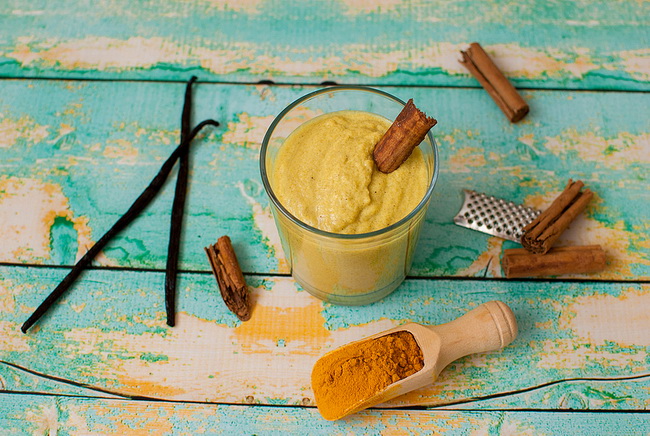- Make It Yourself Lavender Heart-Shaped Bath Bombs!
- 20 Things You Never Knew About “Down There”
- 12 Best Foods For Those Suffering From Arthritis Pain
- 12 Personal Hygiene Mistakes Almost Everyone Makes (Mom Never Told You About #4!)
- 15 Medicinal Plants And Herbs From The Cherokee People
- 12 Mind-Blowing Benefits Of Drinking Coconut Water During Pregnancy
- 12 Outstanding Winter Foods That Won’t Fatten You Up Like A Christmas Turkey
Turmeric: The Most Powerful Medicinal Plant on the Planet

Photo credit: bigstock.com
Surely by now you have heard people talking about turmeric and all the wonderful things it can do. Maybe you have thought, “So what? That’s the stuff in curry powder, right? What’s the big deal?” It’s actually a bigger deal than anyone ever imagined, and scientists are just scratching the surface.
Even though turmeric has been around for thousands of years and has been used in Ayurvedic and ancient Chinese medicine for just as long, westerners and modern medicine is only beginning to catch up to the wonders of this spice. In fact, even if Big Pharmacy never admits that turmeric can prevent or cure anything, there is crystal clear evidence that this spice has amazing medicinal powers. Even Big Pharma cannot deny the proof of more than 4,000 studies! Some scientific research has suggested that turmeric might be helpful for more than 600 different health problems.
Turmeric appears to be super safe as well with almost no side effects other than a very few persons who appear to be allergic to it. Otherwise, there have been no recorded side effects. Big Pharma certainly can never make that claim!
This spice is a close relative of ginger and is typically grown in very much the same way. Although you often find turmeric in a fine, yellow colored powder, the root of the plant is actually a deeper orange color, much like ginger. Most of the turmeric we get today is grown in Pakistan or India, where the root is still used, as it has been for thousands of years, as both a cooking spice, and as a medicine. Although some cultures use the leaves, it’s really the root that is most prized and is most commonly used.
You will sometimes hear turmeric being referred to as Indian Saffron; this is because of the orange/yellow color that turmeric will impart to everything it touches, so it is sometimes used to color cloth and other items, such as food, as well. Turmeric is much less expensive than saffron, so it is often used as substitute colorant.
Continue to Page 2


































Ellis Drewery
Aug 3, 2015 at 1:05 pm
I have been taking turmeric for a couple of years now….and I don’t see all the wonderful benefits attributed to this herb. I have had a multitude of inflammatory issues with my ankle, hip and hands. I take celery seed extract, garlic, ginger, tart cherry extract, and turmeric, and still see very little signs that they do very much good. I do not have Rheumatoid Arthritis, just the maladies of aging in my joints. In comparing the day to day maintenance use of herbals against the benefit that can be derived from just one prescription tablet for inflammation, it is easy to see how detractors might disparage the use of natural remedies.
ce373
Aug 10, 2015 at 4:04 pm
Have you tried Glucosamine Condroitin with MGM? I have been on it since I was 52 and now am 71.5 and Praise the Lord not one ache or pain in my body by taking usually only one pill a day.
Ellis Drewery
Sep 9, 2015 at 4:15 am
Thanks for the suggestion, ce373. Glucosamine and Chondroitin have been included in almost every joint formula in existence for a long time now. MSM is relatively new but, I have taken it also in the past. I am now taking a supplement with collagen, boswellia, white willow bark, ginger, and a host of others. I intend to give it a three month trial before passing judgement.
ce373
Sep 10, 2015 at 2:11 pm
Some experienced people say that if it isn’t working after a year, but some change has been experienced, one probably isn’t taking the right dosage.
Glen
Aug 3, 2015 at 2:54 pm
i take a half a teaspoon with my powdered fiber supplement every day. i`ve seen this article 3 or 4 times now and it never tells us how much of the actual spice is needed to gain the benefits. so the article is really no help. but i guess when you get paid by the word…..